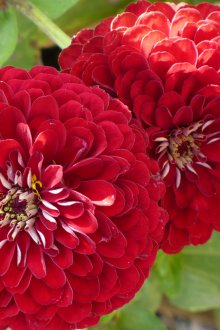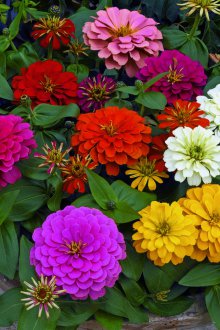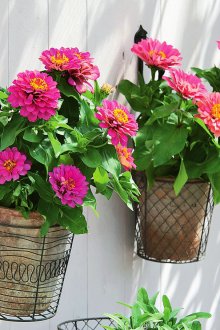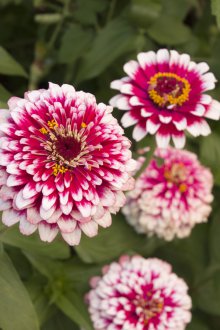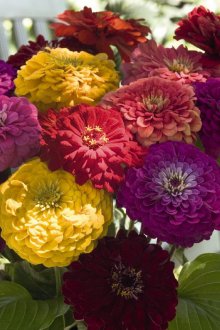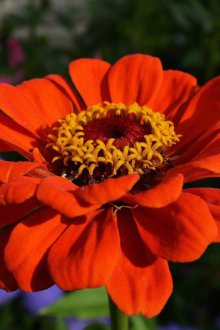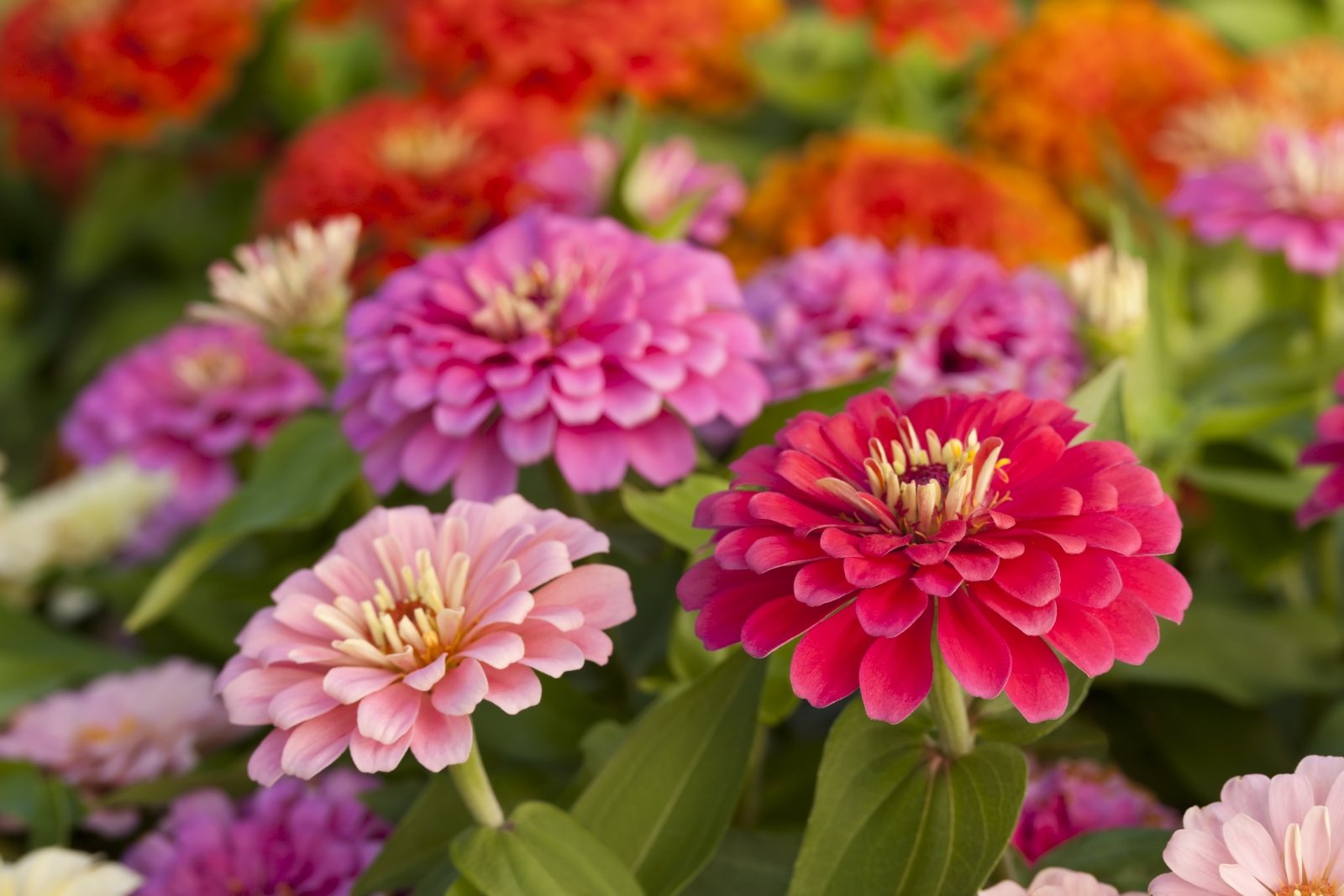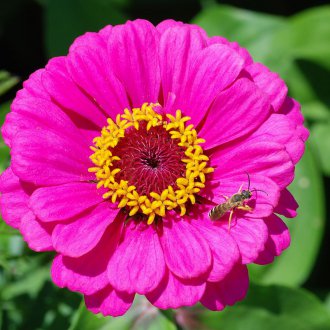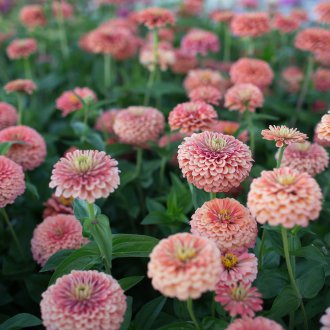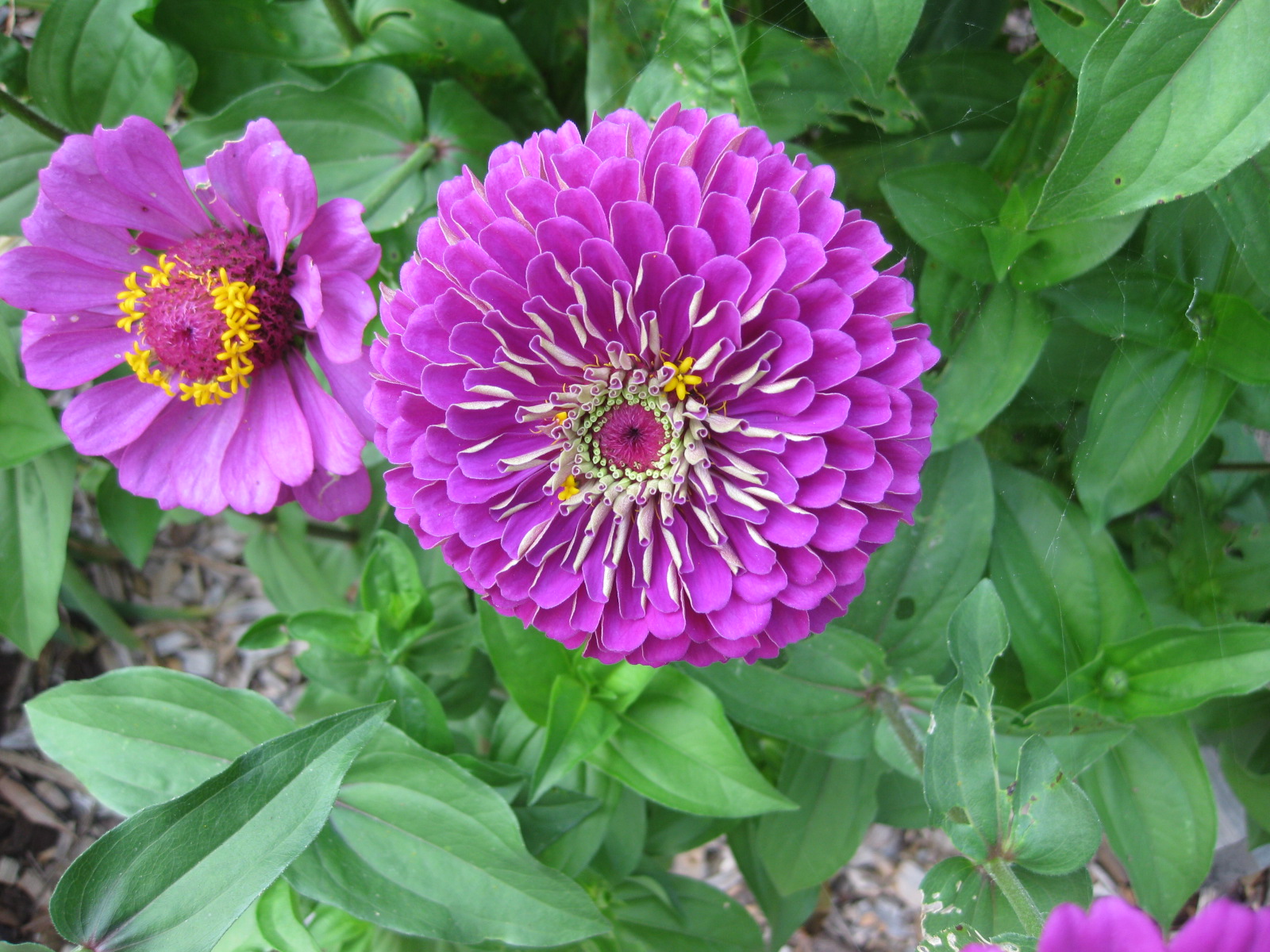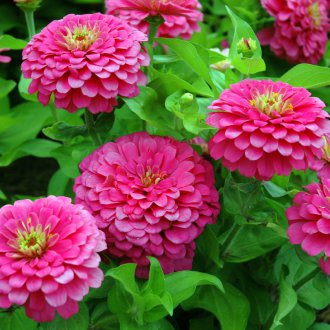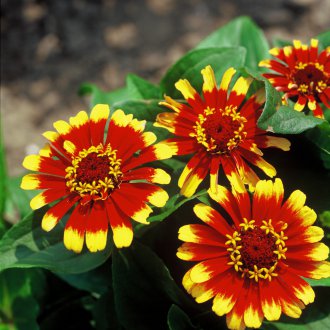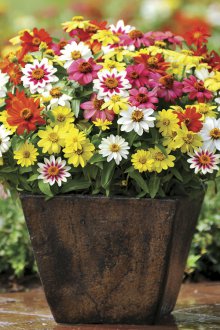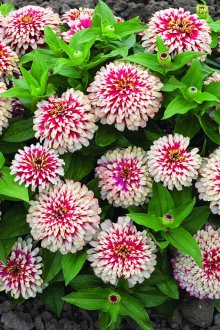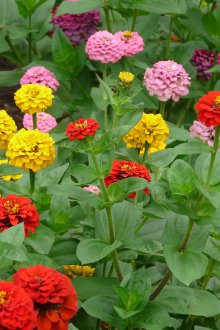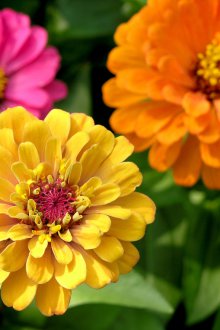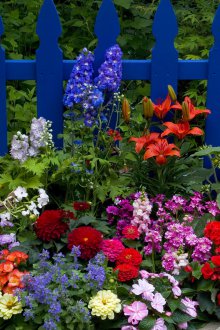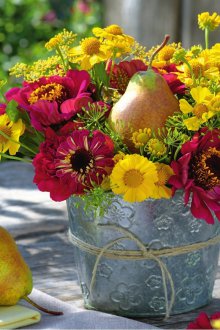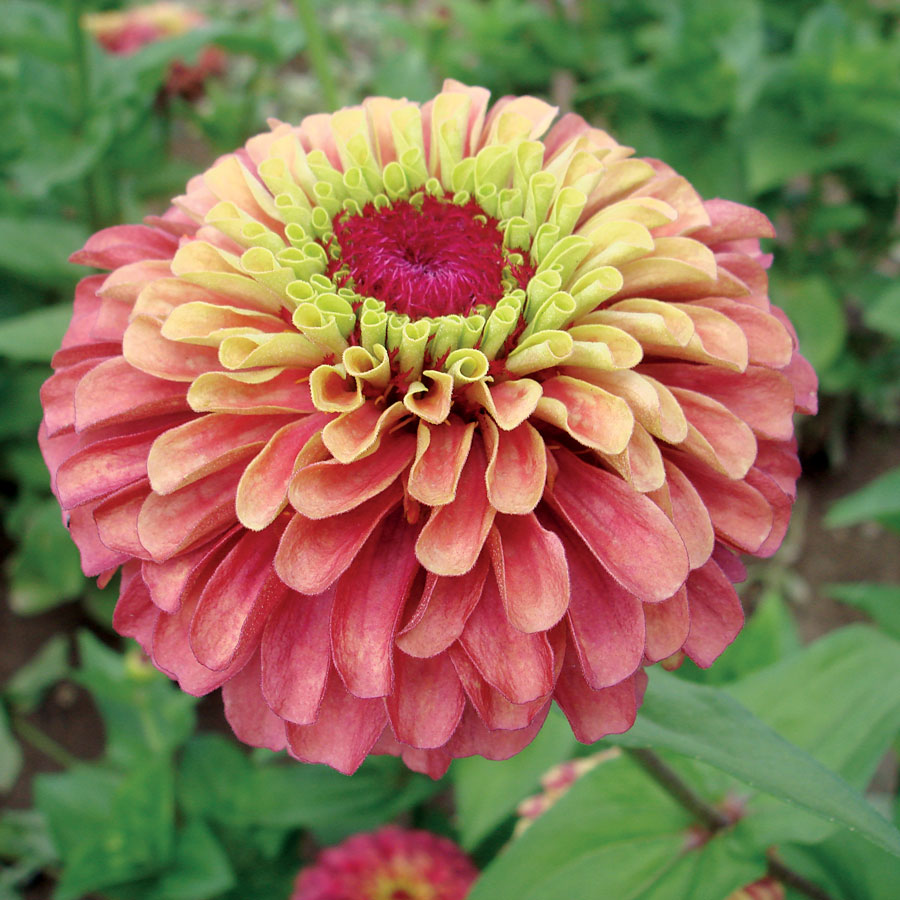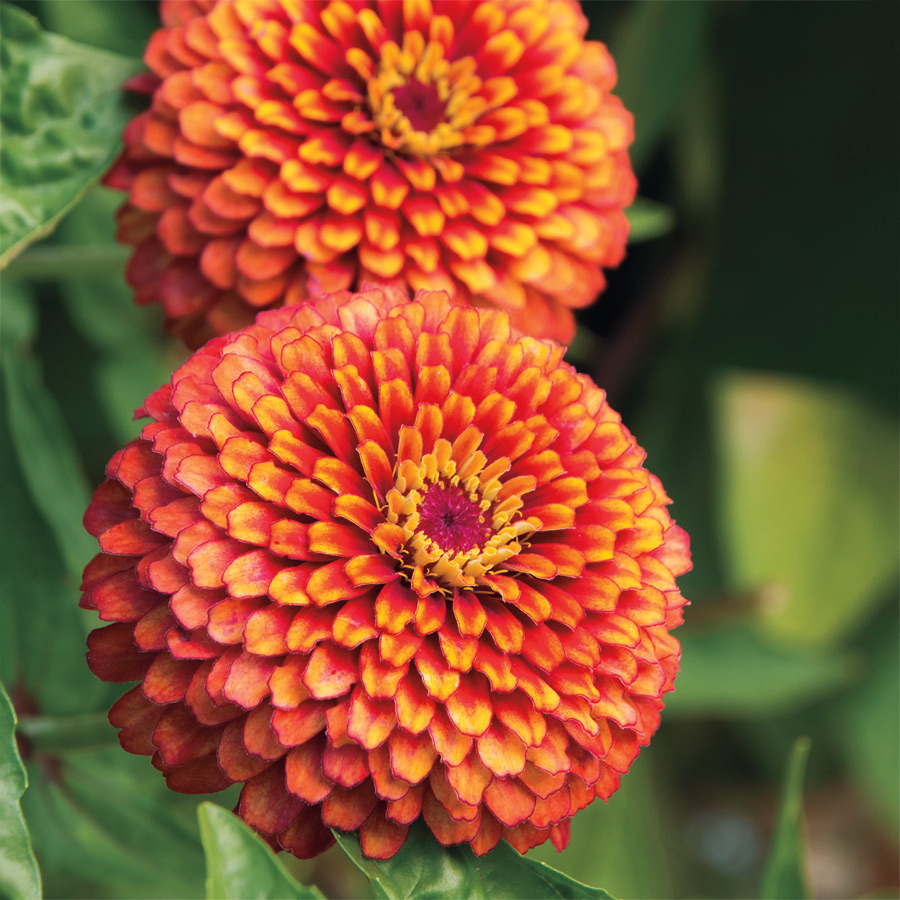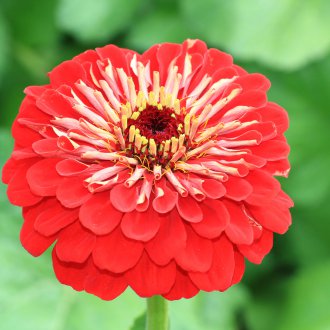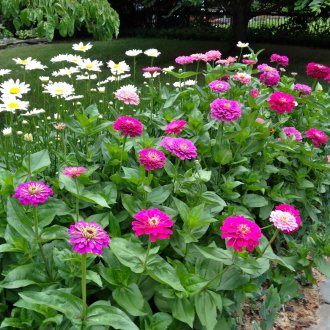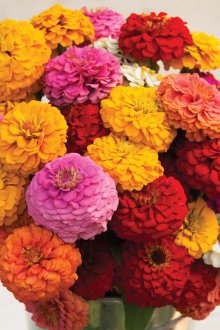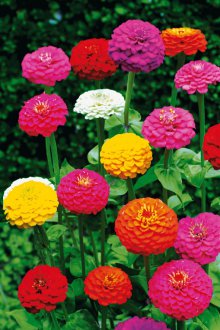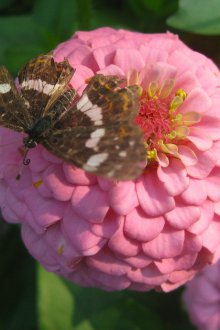Zinia: species, landing, nuances of care (25 photos)
Content
Tsiniya is an unpretentious plant, well adapted to the climate of the middle strip and numbering a huge variety of varieties and species. It is most common in America, where it is appreciated by gardeners for specific advantages:
- A huge variety of shapes and colors. You can find a variety that suits any design decision and will become an adornment of any garden, no matter how it looks.
- Any height to choose from. Types of zinnias are so diverse that among them are found both stunted zinnia, barely reaching twenty centimeters, and tall plants, growing in lush bushes almost a meter high. Thus, for any purpose there is a suitable option.
- Unpretentiousness. Cultivation is almost effortless, and caring for cinnamon at home is completely uncomplicated. Periodic watering and rare fertilizer are enough for a riot of colors to reign in the flowerbed with zinnias all summer.
- Long flowering. The aroma of blooming zinnias will fill the garden all summer - blooming in the very beginning of June, zinnias will bloom only by mid-autumn, when the first frosts strike. If you grow them in an apartment, in pots, then flowering will last all year round.
- Resistant to drought and wind. Even for the highest varieties of zinnia, no additional garters are needed - their strong stems are able to endure even the strongest impulses. The same applies to heat - even in the most severe drought, heat-loving zinnias will not die.
The only thing that can really threaten the flowers is sudden frosts. Once the temperature drops below zero, the zinnia will die if you do not take it to the house in pots. Frost is terrible for all species - among all dozens, not a single frost-resistant one can be found.
Types of Zinnia
At home, two main varieties of zinnia are usually grown, which, in turn, are divided into many subspecies, sometimes radically different from each other. A similar variety has been achieved for many years of selection: all over the world, gardeners have been working to develop new varieties and species.
The first common variety is elegant zinnia. She came to world gardening from Southern Mexico, very varied by subspecies. Reaches up to ninety centimeters in height, the leaves are pointed, with an edge without denticles, located opposite each other and directly on the stem. The flowers are elongated, the most diverse shades. It blooms very plentifully, from June to the first frost. Graceful zinnia seeds remain viable for up to four years - but require soaking before sowing. There are separate groups of elegant zinnia species.
Dahlia
Zinnia of this group grow in sprawling bushes, reaching a height of ninety centimeters. The flowers in them have the shape of a half ball, up to fifteen centimeters in diameter, terry petals, their edges slightly bent inward. Separate types are distinguished:
- violet - purple flowers of various shades;
- raspberry monarch - dense dark red flowers;
- lavender queen - lavender flowers with a hint of purple;
- orange king - orange or red-orange flowers;
- polar bear - white flowers with a greenish tint;
- purple prince - very spectacular purple flowers;
- rose - pink flowers of various shades;
- tango - loose, red-orange flowers;
- Envy is the most original and suitable for non-standard design solutions variety with lush green colors.
Pompom
Zinnias of this group grow in compact low-growing bushes, hardly reaching even half a meter in height. Their leaves are small, pointed, the flowers are very dense, rounded and terry. Small - barely reach four centimeters in diameter. It blooms profusely, not sequentially, but simultaneously. Separate types are distinguished:
- Little Red Riding Hood - an almost round bushy bush with bright red flowers that even when constantly in the sun do not lose color saturation;
- tam-tamb - bright red flowers, flatter than the little red riding hood;
- little inch - very dense inflorescences from pink to red.
Fantasy
Spherical bushes reaching up to sixty centimeters in height. The leaves are large, inflorescences are loose, look curly. Petals are folded into tubes and diverge in different directions, sometimes bifurcated at the ends. A variety of shades of flowers - from salmon to bright red.
The second common variety is narrow-leaved zinnia. She came to world gardening from Mexico. Annual, grows sprawling bushes up to forty centimeters tall. Leaves are attached directly to the stem, usually elongated, up to six centimeters long. The flowers are small, up to four centimeters in diameter, plain, loose. The following types are distinguished:
- the solar circle - flowers with a dark orange center and a red-brown edge, on a bush that barely reaches a height of twenty-five centimeters;
- Persian carpet - semi-double red flowers with different shades, from white to yellow, which allows them to look like a single colorful oriental carpet in the flower garden;
- classic - flowers of white, yellow and orange flowers with a thin weak stalk, due to which it turns out not bush plants, but rather ground cover;
- sombrero - flowers of a reddish-brown hue with a bright orange edging.
Any species - red zinnia, terry zinnias, dwarf zinnias - blooms from the beginning of June until the first serious frosts, so you should choose based on aesthetic preferences. Tall bushes? Low bushes? White, orange, purple, even green? What kind of zinnia seeds to buy depends solely on the design solution for the site, since the method of germination and care at home is always the same.
How to plant zinnia?
When asked how to grow zinnia, there are two possible answers.
Planting zinnia in the ground
Zinnia seeds will sprout perfectly if you plant them in open soil - but, choosing this method, it should be remembered that the slightest frost will kill an immature plant. Zinnia is planted in open ground usually in March-April, and perhaps this is only in a warm mild climate. The process takes place in several stages:
- Selection. To separate the germinating zinnia seeds from non-germinating ones, you should wrap everything in moist gauze and leave for a couple of days. Those that produce sprouts after this period are suitable for planting.
- Site preparation. The soil should be dug up so that it is saturated with oxygen, and dig shallow grooves in it.
- Sowing. Seeds should be poured into the grooves and gently sprinkled with sand on top.
- Creation of conditions and expectation. The sown bed should be covered with an opaque film to create greenhouse conditions for the seeds. The temperature inside should not fall below twenty degrees. When the seeds of zinnia sprout, you can remove the film and take care of them, as with any planted seedlings - spray, water and very carefully loosen the ground.
Germination of zinnia in a pot
In the middle lane with severe winters and late spring, zinnia does not plant in open ground - even if you take care of it very well, it still will not survive, therefore you should first sow the seeds at home, in the heat, and only when the seedlings get stronger, does the zinnia transplant into open priming. The process runs sequentially:
- Selection.Seeds should be wrapped in a damp cloth and see which ones sprout in two days. All gardeners know about the rest - plant them, do not plant - they still will not rise.
- Preparation and sowing. A container - this is either a special box for seedlings, or any plastic container - is filled with a mixture of earth and sand in equal proportions, after which zinnias are sown there. Seedlings do not tolerate close proximity, because a pair of seeds per cup will be enough.
- Care. The soil in pots needs to be moistened regularly, make sure that the temperature does not drop below twenty degrees. When the sprouts appear, you need to make sure that they have enough light - if from their lack they begin to stretch too much, you need to move them to a more sunny place and sprinkle the roots with earth.
- Landing in open garden soil. Held at the end of May - or at the end of June, if the area is cold. Care must be taken not to damage the fragile roots.
When zinnia appears in the garden, growing it will not seem such a costly affair - its bright, lush flowers are definitely worth the effort, fertilizing and monitoring the seedlings.
Cinnamon Care
In order for perennial zinnia to grow well and bloom profusely, you need to follow the following important parameters:
- Accommodation. Zinnia flowers, planting and care of which require some care, love the light. A place flooded with scattered sunlight will definitely suit them. It should also be protected from drafts and, ideally, located on a hill, as the zinnias do not tolerate stagnation of water.
- The soil. Must be well-drained and fertile. Before planting the zinnia, dig it half a meter in depth, killing the weeds and saturating it with oxygen. If it is understood that the flowers on it will be perennial, you can add organic top dressing.
- Watering. Zynia, the care of which requires moderation rather than excess, prefers to adhere to a similar rule when watering. It should be regular and moderate - better less water than more. It should be watered under the root, so that water does not fall on the inflorescences - otherwise the flower may begin to suffer from one of the specific diseases caused by excess moisture.
- Loosening. It should be carried out regularly so that zinnia is not disturbed by diseases and pests, as well as a lack of oxygen. Be sure to do this as carefully as possible.
- Top dressing. Zinnia is fed a month after planting in the ground and immediately after the formation of the buds. As fertilizer, complex mineral or manure solution is used.
- Topping. Any zinnia, the varieties of which can be any, does not need pinching. It is enough to remove the faded buds - then its flowering will be more abundant.
Perennial cynium, planting and caring for which is not so difficult, will bloom, delighting everyone coming to the site every summer. Minimum watering, two times fertilizing plus transfer to the house for the winter - that’s all that this unpretentious plant needs.
